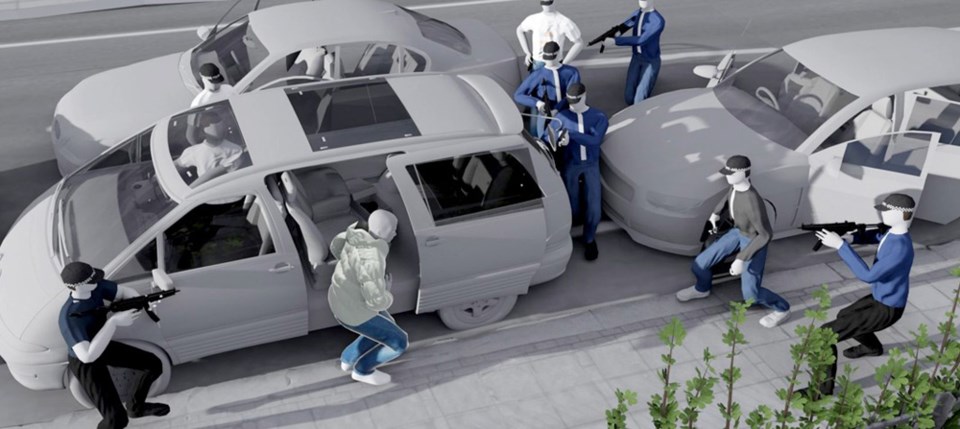A new exhibition at the New Media Gallery is turning an eye to civil rights activism in the digital age.
Eyewitness runs Feb. 5 to March 30 at the New Westminster gallery, on the third floor at Anvil Centre (777 Columbia St.)
A gallery press release notes that, not long ago, at the beginning of the 21st century, a flurry of radical technological changes ushered in a new era of civil rights activism. New technologies brought unprecedented opportunities to gather, analyze and report out to a global audience, giving new significance to the idea of “citizen journalism.”
The international artists behind the three works in the exhibition use a number of sources and techniques – from cellphone and CCTV content, to forensic analysis and creative coding – to gain access to missing, hidden or difficult-to-retrieve information.
“Each work deconstructs selected events, times and places, offering us a range of eyewitness perspectives, interpretations and testimony,” the release says.
The works examine the ways in which new technologies hold both the promise and the threat of greater accuracy, control and discovery. They are not fictional narratives but rather “complicated, uncomfortable and challenging real-world events.”
Forensic Architecture, based in the U.K., publishes the results of their rigorous forensic process into the killing of a black man by police.
CAMP, an Indian studio, connects diaristic testimony of expelled home owners in a state-controlled eviction, together with controlled CCTV footage of those homes.
Belgium artist Dries Depoorter connects publicly available emergency police calls in Seattle with the city-wide system of CCTV cameras.
“This is not conventional surveillance. Instead these works turn the panoptic eye of surveillance on the institution or state itself, prompting a different set of ethical and moral questions,” the release says. “Each of the works centres the plight of the human subject, while the architectural surroundings and built environment become key, defining elements.”
The gallery warns that some people may find content in this exhibition disturbing, including forensic references to gun violence and death, references to civil unrest in East Jerusalem, and potential police and emergency response calls.
Bookings are required to visit the gallery. Exhibition bookings go live Feb. 4 at the New Media Gallery website.
Follow Julie MacLellan on Twitter @juliemaclellan.
Email Julie, [email protected].



